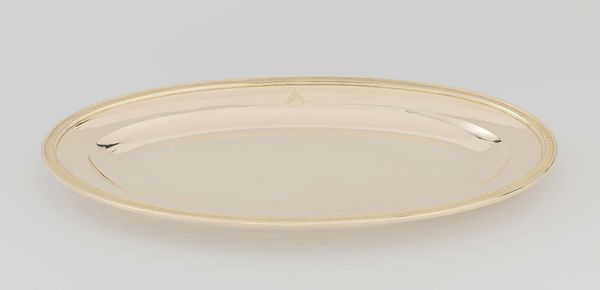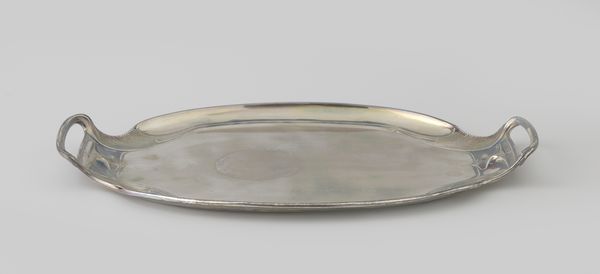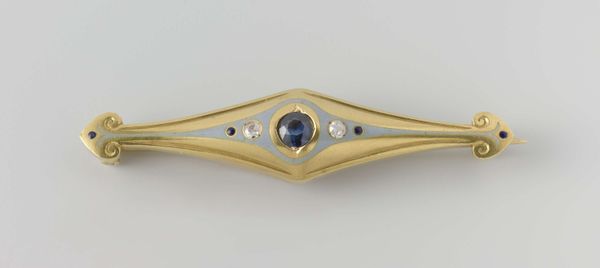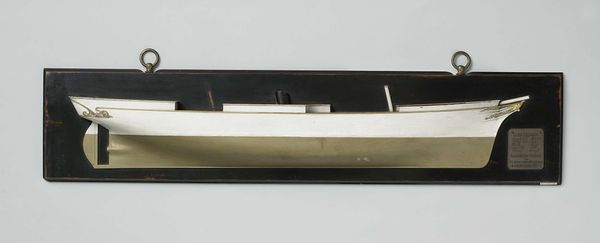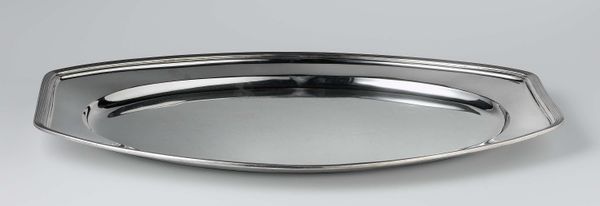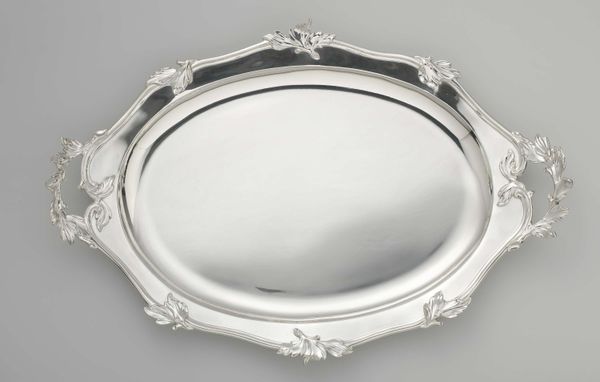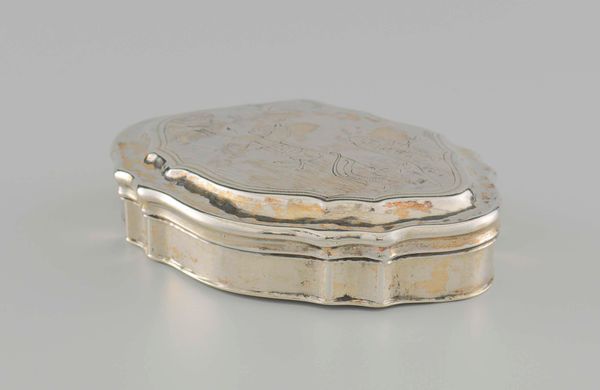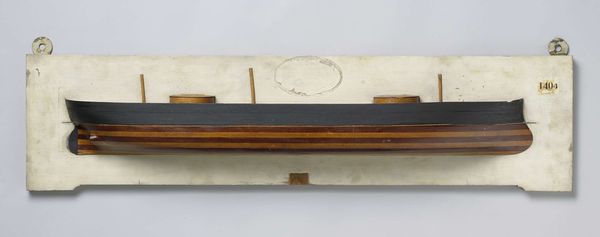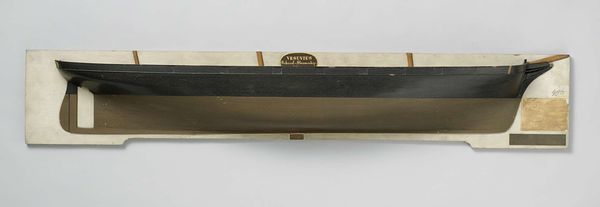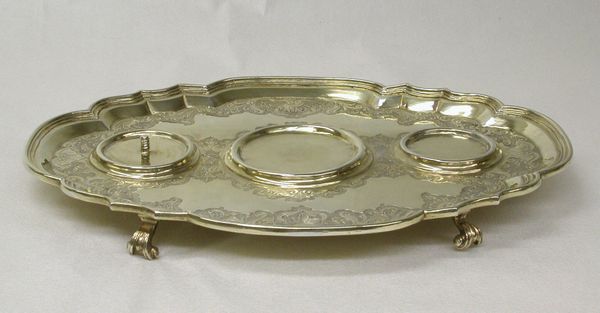
Cloches (dish covers), coolers, soup tureens, sauceboats, salt cellars, pepper and mustard pots c. 1819
0:00
0:00
metal
#
metal
#
decorative-art
Dimensions: height 3.1 cm, diameter 48.5 cm, diameter 31.5 cm
Copyright: Rijks Museum: Open Domain
This is a silver gilt dish made by Jean-Baptiste-Claude Odiot, a piece of tableware from a larger set that once graced a table of distinction. Note the stylized palmette motif that encircles the rim. Palmettes, derived from the palm tree, were ancient symbols of victory and eternal life. In ancient Egypt, the palmette adorned sarcophagi, assuring rebirth. This motif reappears across time; it's seen in ancient Greek friezes and Renaissance ornaments. Here, the palmette's presence on a mere dish cover connects us to a timeless human longing, our collective, subconscious desire for triumph and perpetuity. It represents a cyclical progression, a motif that has resurfaced, evolved, and taken on new meanings in vastly different historical contexts.
Comments
rijksmuseum over 2 years ago
⋮
A confidante of the Russian empress commissioned this 140-piece service, several items of which are displayed here. Silversmith Odiot, the painter Prud’hon and the architect Cavelier proudly presented the new models at the 1819 French national exhibition of decorative art. Notable are the kneeling angels supporting the soup tureen, which are characteristic of the late Empire style.
Join the conversation
Join millions of artists and users on Artera today and experience the ultimate creative platform.
